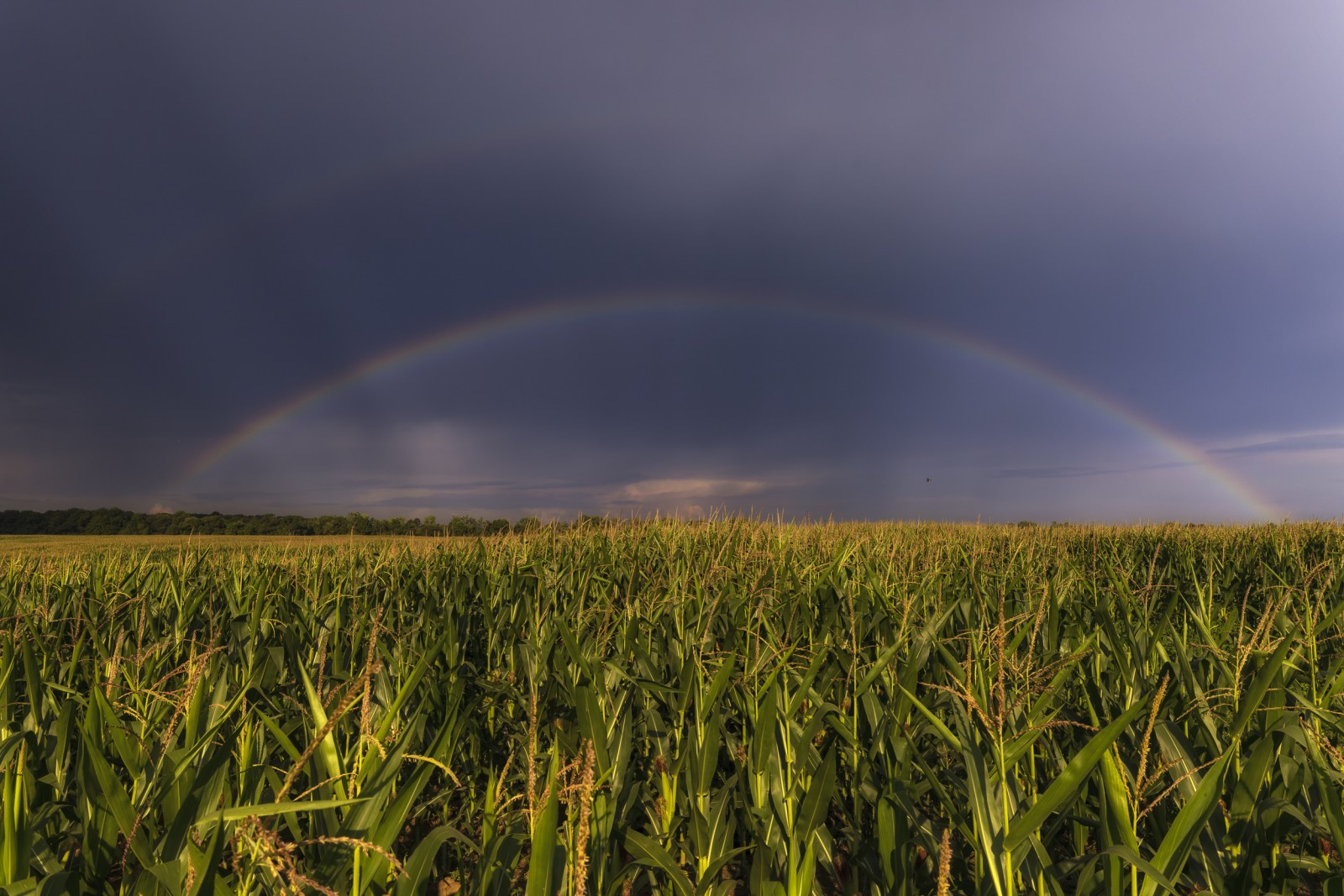“We Can’t Sit Back” – Amid Polluted Water and Climbing Cancer Rates, Iowa Eyes Farm Chemicals
Health authorities react to rampant fertilizer and pesticide contamination in water.
By Keith Schneider, Circle of Blue – December 18, 2023
Articles in this project are edited by Carey Gillam, managing editor of The New Lede.
Faced with a startlingly high cancer rate in the key US farm state of Iowa, public health leaders are taking the politically precarious step of acknowledging that preventing disease necessitates cutting exposure to potentially cancer-causing chemicals, including those used in agriculture.
In a departure from other state cancer prevention programs, which rarely address environmental risk factors for cancer other than radon, a known cause of lung cancer, Iowa is working to better understand and make the case for limiting exposure to pesticides, commercial fertilizer, and animal manure used and generated by Iowa agriculture, among other environmental contaminants.
“These broader array of environmental risk factors are absolutely there for cancer. But they’re not paid attention to in state cancer control plans,” said Molly Jacobs, an epidemiologist at the University of Massachusetts, who is working with Iowa health authorities. “It’s quite unique that Iowa has addressed this as a priority in their plan. I applaud Iowa for taking on this task of thinking much broader and bigger, and changing this paradigm.”
The work to address environmental factors to reduce cancer cases began earlier this year and is being undertaken by the Iowa Cancer Consortium. It’s a 21-year-old, 650-member coalition of public health professionals, researchers, and health providers focused on controlling cancer. The consortium is led by Mary Charlton, an epidemiologist at the University of Iowa College of Public Health who also is research director of the Iowa Cancer Registry, which collects cancer data on Iowa citizens.
The consortium has launched an Environmental Task Force and a five-year plan for cutting public exposure to “environmental carcinogens.”
Farmers, agricultural executives, and state lawmakers have spent decades resisting any changes in farm practices that reduce the use of chemicals and nutrients, saying the inputs are needed to ensure ample food production.
But public health advocates say evidence tying the farm pollutants to disease is too strong to deny.
“We can’t sit back and say, ‘Wow. Somebody may not like this.’” said Kamyar Enshayan, director of the Center for Energy and Environmental Education at the University of Northern Iowa. “Knowing what we do know, it’s just prudent that we support practices and systems that require significantly less fertilizer and pesticides.”
Research shows that Iowa agriculture can remain productive even when cutting synthetic fertilizer and pesticide use, Enshayan said.

Iowa farmers annually spread more pesticides (nearly 54 million pounds) and more commercial fertilizer (2 billion pounds) than in any other state. They do it with spray equipment like this at Northern Country Coop in Stacyville, Iowa. (Photo/Keith Schneider)
Cancer rates on rise
Iowa now ranks second to Kentucky in cancer incidence in the United States, and from 2015 to 2019 was the only state where the rate of new cancers increased, according to the National Cancer Institute. Rates of oral cancer, leukemia, non-Hodgkin lymphoma, melanoma, kidney, colon, and breast cancer are among the nation’s highest, according to Charlton.
The state is expected to see 21,000 new cases of cancer this year alone, more than double the number of new cancers recorded for 1973, the year Iowa began keeping records, according to Charlton. Since 1973, the state population has grown only a little over 10%.
“Some cancers in Iowa are rising and others are not falling as quickly as they are in other states,” said Charlton. “We do know that Iowans have a number of environmental exposures that could contribute to our risk of cancer.”
Exposure to nitrate in drinking water is well-recognized by scientists as a risk factor in many of the same high-incidence cancers seen in Iowa – lymphoma, breast cancer, blood, and colon cancer.
Cancer researchers, including a group from the University of Iowa, have linked various cancers to long-term exposure in air and water to trace levels of insecticides and herbicides, as well as nitrates. And Iowa farmers annually spread more pesticides (nearly 54 million pounds) more commercial fertilizer (2 billion pounds) and more animal manure (50 million tons) than in any other state, according to the US Department of Agriculture (USDA) and Iowa State University.
These farm pollutants heavily contaminate surface and groundwater across Iowa, according to state monitoring data, potentially exposing even people who don’t live and work on farms,
Links between farm contaminants and disease have long been studied. In 2001, researchers at the University of Iowa evaluated data from a long-term study of more than 20,000 women in Iowa and found increased risks of bladder and ovarian cancers associated with elevated nitrate levels in public drinking water supplies used by the women.
A 2018 peer-reviewed paper by National Cancer Institute researchers and other scientists evaluated 30 epidemiology studies of low-level exposure to nitrates in public drinking water systems, finding that many studies “observed increased risk with ingestion of water nitrate levels that were below regulatory limits.”
The surface beauty of a maturing corn field disguises the farm-related contaminants that pollute thousands of drinking water wells from Minnesota to Missouri, and impair virtually every mile of streams and rivers in Iowa. Photo © J. Carl Ganter/Circle of Blue
“It touches everybody”
Since 1973 the total number of Iowa farms has declined but the remaining farms have expanded in size and productivity. Iowa acres planted with corn, the most heavily fertilized crop, increased nearly 30 percent from under 11 million to 14 million, according to the USDA. And thanks in part to heavy fertilizer use, corn yields on average have doubled from under 100 bushels to 200 bushels per acre.
In 1973 Iowa corn farmers used an average of 109 pounds of fertilizer per acre. By 2018 they were using 139 pounds per acre, according to the most recent USDA data.
Crop researchers have known for decades that as much as 70 percent of the nitrogen in fertilizer and manure is not taken up by crops and drains into ground and surface water as nitrate.
Participants in the Iowa Cancer Consortium note that many factors can play a role in development of disease, including genetics. But scientists are increasingly studying how exposures to pesticides and other environmental toxins impact health. In 2010, the Obama administration’s President’s Cancer Panel produced a thorough study on reducing environmental cancer risk that specifically identified insecticides, herbicides, and nitrates as a “contaminants from agricultural sources” that merit attention as potential causes of cancer.
Enshayan and other consortium participants acknowledge that targeting agricultural practices as a public health threat in Iowa is politically risky.
This year alone a prominent researcher who was critical of nutrient pollution was forced out of his post at the University of Iowa. The state legislature decided not to fund Iowa’s state-of-art system for monitoring nitrate levels in streams. A plan by the state Department of Natural Resources to protect groundwater by requiring better construction and oversight of manure storage lagoons at large livestock operations was dropped in November.
The cancer consortium’s work, which is likely to take years, is significant, both for the state, and for the nation. Of the states with the highest cancer incidence, four others in the Corn Belt rank in the top 15, according to the CDC.
“The really important thing to consider is cancer is non-partisan and non-political,” said Kelly Wells Sittig, executive director of the consortium. “It touches everybody.”
The Alicia Patterson Foundation and the Fund For Investigative Journalism awarded investigative reporting fellowships to support this project. Along with The New Lede, co-publishers include: The Guardian, Great Lakes Now, Michigan Radio, Investigate Midwest, and MinnPost.
Circle of Blue’s senior editor and chief correspondent based in Traverse City, Michigan. He has reported on the contest for energy, food, and water in the era of climate change from six continents. Contact
Keith Schneider
Related
© 2025 Circle of Blue – all rights reserved
Terms of Service | Privacy Policy






